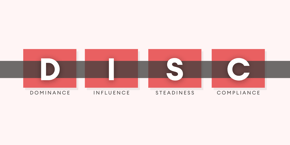What is Data Visualization?
Data. If you have a lot of it – and who doesn’t these days – it can be overwhelming. While those who aren’t responsible for using the data might think it is easy, wrestling the numbers into a presentation, report or pitch can be a Herculean task.
Finding the necessary data in your systems, extracting it, and using external software to edit it leaves a lot of room for error.
One typo and all of your pie charts and scatter graphs can break, turning your hours of hard work into a mess of useless formulas.
Excel creates a lot of issues on its own. Many people aren’t confident using the program, and manually creating reports is time-consuming. On top of all that, manual reports are obsolete the moment you have exported your data from the CRM.
If you lack the I.T. skills of Bill Gates and the typing speed of the Flash, you may want to investigate automated reporting from your CRM. If you want anyone to actually read and understand your reports, our advice is to use data visualization.
Data Visualization
While it may seem like one of those vague tech phrases, there is no need to be bamboozled by this term. Data visualization encapsulates the various ways we turn data into pictorial form. Think pie charts, bar charts, mind maps, scatter graphs, and all the other things that are long since been forgotten from math class.
Creating many of these types of visual representations of your data still requires some data input, exporting to a presentation report of some kind, and existing knowledge of how to do this.
You may also be looking into specialized external software that turns your exported raw data from a donkey into a unicorn. Using these systems works, but usually at a cost – and that data is old the moment you hit export.
Another pitfall with creating a visual report from scratch is where to stop. How many graphs to include? What colors should you use? Should you animate your slides?
As a result, a lot of reports and presentations are overly complicated.
The 4 reasons your reporting needs data visualization
1. You can understand the data faster
Don’t be discouraged. Here are our reasons to use data visualization in your reporting, with a few top tips along the way:
Data visualization is the best way to communicate data because…
We are still cavemen.
We may have come a long way in society but biologically we are the same. Thousands of years of surviving solely on visual stimuli have made images the preferred method of receiving information.
Our sales enablement software gives you the power to access visual data and generate reports in the office and on the move. This means that you have in-depth information that can be shared quickly with your customer or prospect.
2. You can see relationships and patterns
The power of being able to literally show your audience a pattern or trend is priceless. With data visualization, you can show your audience industry spend patterns, income changes, and upcoming opportunities in a few clicks.
It saves you many long-winded explanations about your findings in a text-based document that most of the attendees will conveniently forget to take with them after the meeting.
An overview dashboard can prompt you to look into emerging patterns rather than hoping you know what to look for in your research. As every researcher can tell you, looking for a particular outcome from your data can skew the reliability of your results.
Once you have your parameters, automated reporting will keep your data fresh and relevant. Getting alerts to data changes and updated reports to your inbox will mean you are always ready to update your management team, sales team, and customers on what to do next.
Having this functionality in the field, as sales-i provides, transforms this tool from being useful to your business to being useful to your customer's business.
You can show customers how they could benefit from bulk or regular ordering from you, or how they could be missing out on savings their competitors are getting by ordering additional products from you.
Having this level of insight into their needs will demonstrate that you understand the customers’ market, their needs, and what they may need in the future, giving you a serious competitive advantage.
3. You can share insights faster
4. You keep your brand consistent
Being visual through a centralized reporting platform, such as sales-i, gives you the opportunity to incorporate your brand and corporate culture into every presentation, report, and customer-facing document.
Exporting complete reports with integrated data visualization assures the correct colors, fonts, and layouts are adhered to. Plus, for the less technical members of your sales team, the ease of use provides a new arrow in their sales quiver.
Save yourself.
If you have ever been drowning in requests for reports, bored by reams of paper in a meeting, or frustrated waiting for your marketing team to build or approve your sales presentations – you need a quick integrated sales enablement tool like sales-i.
Combining our sales analytics and CRM features will empower you to save effort across the board. Save yourself from wasting time, Excel errors, poor branding, missing targets, and most importantly, save yourself from being forgotten by your prospects, clients, and managers.



